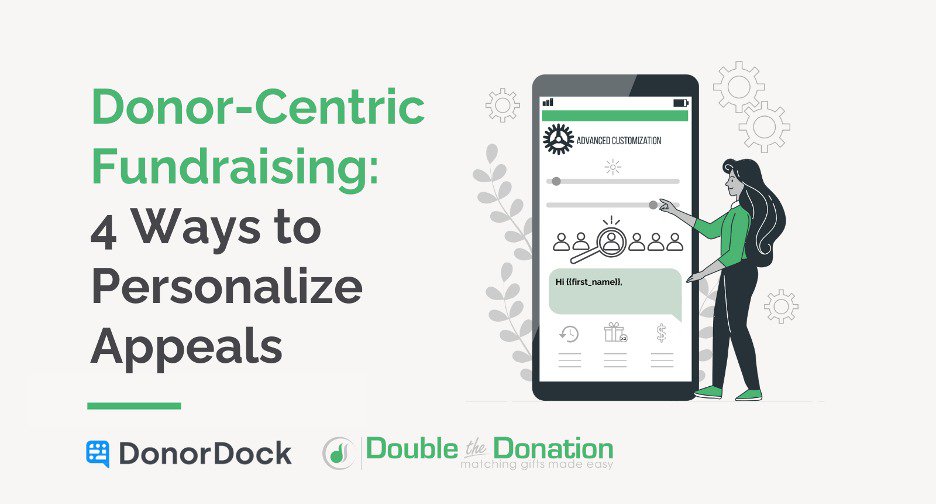Ever found yourself wondering why some nonprofits seem to thrive, while others struggle? What’s the secret ingredient behind a nonprofit’s success? The magic happens when there is a strong culture within a nonprofit organization - one that encourages growth, nurtures values, and embraces courage. That’s where real change begins.
How to develop a strong culture for your nonprofit
A strong organizational culture can make a big difference for nonprofits. It's like the heart of an organization, pumping energy and purpose through every action. But how do you get started in building and shaping your nonprofit’s culture?
The first step is figuring out the core values of your nonprofit.
Determine organizational values
Just as our personal values guide us, nonprofit organizations also need clear values to navigate their work. Think of these as your compass; they help you stay on track when things get tough or confusing.
“One thing that happens when you try to define your values is they're all good. We want to be all of them. Of course you do but what are your unique values?”
- Julie Boll, Beyond the Donation episode 21
It might feel overwhelming to decide which values should define your nonprofit. There are so many good values to choose from. To define your values, start by asking some deep questions about what truly matters to your organization. Is it all about community impact? Or maybe innovation is at the top of your list?
“When I think about values, I think it's helpful to look at moments you want to celebrate - where you say, ‘This was right. This was what we were put in this world to do.’ Dissect it and see what values come from that.”
-Julie Boll, Beyond the Donation episode 21
You might feel like there are specific values you are supposed to choose for your nonprofit, but there's no right answer here - just honesty. Because values that don’t deeply resonate with your organization will be difficult to put into practice.
Living out organizational values
Now that you've defined your values, it’s time to bring them to life. How does your nonprofit live out its values in the day-to-day?
Imagine if 'transparency' was one of your core principles: how would that look in everyday operations? How would transparency shift the way that you make decisions or interact as a team?
Transparency could look like inviting feedback from your employees and being open to even the hard conversations. It would also include keeping employees in the loop for both the good and bad news.
The process of putting your values into action isn’t always straightforward. It might take a little trial and error to figure out exactly which values are the right fit for your organization. It’s like a classic school experiment – start with a hypothesis (your value), test it out (try behaviors reflecting this value), and note results (check whether it truly reflects who you want to be).
Bridging the gap between ideals and actions is challenging but rewarding. With time and dedication, even small nonprofits can foster robust cultures rooted in well-defined organizational values.
The impact of leadership on nonprofit culture
Leadership within a nonprofit has the power to shape and steer its culture. This influence can manifest in numerous ways, but it often starts with the executive director's approach.
Executive Directors as Culture Champions
In nonprofits, executive directors are more than just decision-makers; they're role models. Their actions send strong signals about what is valued in their organization. They need to lead by example and consistently demonstrate the behaviors that reflect their organizational values.
“Sometimes, people call up and say, ‘I want you to train all my middle managers. But I'm too busy.’ That's not gonna work. If they don't see you doing the work and choosing the hard choice, it doesn't work.”
- Julie Boll, Beyond the Donation episode 21
This doesn't mean just talking about values during staff meetings or listing them on a website - although those are important steps too. It means integrating these principles into everyday operations and interactions with team members.
Making value-based decisions
Decisions made at the top set an example for everyone else in an organization. When leaders make choices based on their stated values, they help create a culture where those ideals become living practices rather than just words written down somewhere.
If integrity is one of your core values, for instance, you should always be honest even when it’s tough or inconvenient. Doing this repeatedly over time creates trust among employees which fosters a positive work environment - a crucial ingredient for successful nonprofits.
In short: leadership isn’t only about making big decisions – it’s also how we behave day-to-day.
Fostering buy-in
However, fostering buy-in for these values and principles can't just be a pet project of one person in your nonprofit. You need buy-in from everyone in leadership and beyond. Establishing a shared commitment to the organization's core values requires transparent communication and a collaborative effort. Leaders must actively engage with their teams, listen to feedback, and demonstrate the values they advocate for through consistent actions. When buy-in is widespread, it extends beyond the leadership team and permeates the entire organizational culture. This collective dedication to shared ideals not only strengthens internal cohesion but also resonates positively with external stakeholders, contributing to the nonprofit's credibility and impact. In essence, building a values-driven culture is an ongoing, collective endeavor that shapes not just decisions at the top but the everyday behaviors that define the organization's character.
Choosing vulnerability
Leadership development often revolves around seeking guidance on supervising, leading, or addressing performance issues. However, the essence of effective leadership lies in embracing vulnerability. Understanding your weaknesses and an openness to input from your colleagues sets you up for successful leadership. True growth involves self-awareness. The more you learn about yourself, the better equipped you are to guide others. By navigating emotions, particularly shame, leaders can interrupt self-defensive behaviors, paving the way for authentic leadership.
If your nonprofit faces internal culture struggles, resist the urge to dive straight into problem-solving. Take the time to reflect on personal growth, leveraging self-awareness to guide effective leadership and positively influence the organization's culture.
A culture of self-care for nonprofit leaders
Sure, the needs of your organization are important. But let's face it: you're human too. It’s okay - in fact, it’s necessary - to put yourself first sometimes.
You can’t pour from an empty cup, right? That's why prioritizing your well-being is key to effectively leading others. As a leader, prioritizing self-care - such as taking breaks and developing interests outside of work - can help reduce stress levels while promoting productivity. From taking time off when needed to investing in hobbies outside of work, self-care should be on every leader’s priority list.
Self-care also helps set the stage for your expectations of your employees. A big part of self-care is setting firm boundaries between your work life and home life. If you’re not setting boundaries for yourself, then it is impossible to create a work culture that lets your employees have boundaries.
“I see this a lot in nonprofits: exhaustion as a status symbol. The 2 a.m. emails, so that everybody knows you were up at 2 a.m. still working. You can't behave that way and then say, it's okay for you to take off. We're hearing all these horror stories about people not taking care of themselves but insisting that they want their teams to take care of themselves. It doesn't work that way.”
- Julie Boll, Beyond the Donation episode 21
Overcoming a burnout
In the fast-paced world of leadership, burnout can cast a shadow over even the most dedicated individuals. It's the silent consequence of perpetual stress and the relentless pursuit of professional goals without pause. Self-care, however, helps to prevent burnout.
Leaders who prioritize self-care set a powerful precedent for their teams. They communicate that well-being is not a luxury but a fundamental aspect of sustainable high performance. In doing so, they contribute to fostering a healthy work culture that values balance, mental health, and overall employee satisfaction.
Just as the negative consequences of burnout can permeate an organization, the positive effects of self-care can have a ripple effect. Energized and balanced leaders are more likely to inspire their teams, creating a positive feedback loop of well-being and productivity. It's a win-win scenario where the investment in self-care pays off in the form of heightened team morale and increased organizational resilience.
Julie Boll and the Dare to Lead program
Nonprofit consultant Julie Boll has become an advocate for the Dare to Lead approach to transforming a nonprofit’s internal culture.
Sometimes it's really easy to rush to action. It just feels better. So even if you've just given yourself space to get clear on your values and then choose what to do, people will notice that.
- Julie Boll, Beyond the Donation episode 21
Dare to Lead, founded by Brené Brown, brings new perspectives on what true leadership means, challenging conventional wisdom about authority, power dynamics, and interpersonal relationships at work.
To do this effectively requires courageous leaders who aren’t afraid of addressing hard questions or engaging in difficult conversations when needed.
The basics of Dare to Lead
Dr. Brené Brown, renowned for her research on courage and vulnerability, initiated this transformative leadership development program.
Aiming beyond mere business profitability, she wanted leaders who dared to show up, be seen, and lead with their hearts. Dare to Lead challenges nonprofits to:
- have courageous conversations, which become crucial when dealing with sensitive social issues tackled by most nonprofits.
- showing vulnerability allows team members within nonprofit organizations to embrace the risks involved in seeking innovative solutions.
- demonstrating empathy – a significant component of Dr. Brown's teachings – enhances understanding among diverse stakeholders that many nonprofits cater too.
So why does all this matter? Because cultivating courageous leadership isn’t just about individual growth; it’s also vital for nurturing strong cultures within nonprofit teams.














